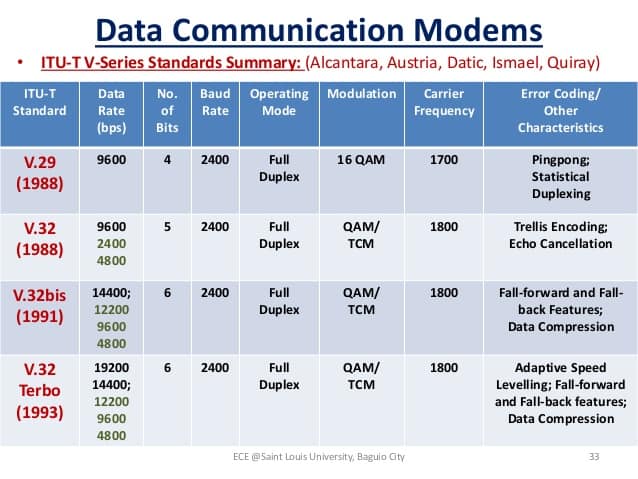Definition of V series in The Network Encyclopedia.
What is V series?
V series is a series of communication standards developed by the International Telecommunication Union (ITU). V series protocols define methodologies for exchanging data over the public telephone system by using telecommunications devices such as modems and multiplexers. Various V series protocols define interfaces between data terminal equipment (DTE) such as computers and data communications equipment (DCE) such as modems, or signaling methods for use over the public telephone system.
Standards V.100 and above deal with internetworking the telephone system with other types of networks such as packet-switching networks, while standards below V.100 deal primarily with general DTE/DCE serial communication interfaces, analog modem technologies, flow control, and error control.

The following table describes some of the popular serial transmission standards relating to modem and other serial communication technologies.
Serial Transmission Standards
Popular Serial Transmission Standards
| V Standard | Description |
| V.22 | Early standard for full-duplex serial transmission over one pair of wires at 1200 bps (or 2400 bps for the V.22bis version). |
| V.24 | The ITU equivalent of the RS-232 serial interface. |
| V.32 | Industry standard for 9600-bps serial transmission (or 14.4 Kbps with V.32bis). |
| V.33 | Protocol for full-duplex synchronous serial communication over leased lines with two pairs of wires; supports speeds of up to 14.4 Kbps and is used primarily in IBM mainframe environments. |
| V.34 | Supports 28.8-Kbps serial transmission (or 33.6 Kbps with V.34bis) over dial-up (one wire pair) or leased (one or two wire pairs) lines. |
| V.35 | Protocol for synchronous serial communication at speeds of up to 48 Kbps; typically used for DTE/DCE communication between Channel Service Unit/Data Service Units (CSU/DSUs) and bridges/routers. Replaced by V.10/11 but still widely implemented. |
| V.42 | Standard for data compression and error control in serial communication; uses both the LAPM (link access procedures for modems) and MNP (Microcom Networking Protocol) series protocols. |
| V.90 | High-speed modem standard that supports asymmetric communication with a maximum downstream data rate of 56 Kbps and an upstream rate of 33.6 Kbps. |
V.35 an V.90
Only two V series standards are covered in detail in this Encyclopedia: V.35 and V.90.